Results 10,421 to 10,430 of 12096
Thread: Anandtech News
-
03-13-20, 12:39 PM #10421
Anandtech: AMD Drop's Ryzen 3000 Pricing By Up to $50: Official Price Drop Until 31st
AMD has started a new promotion and will sell its latest 3rd Generation Ryzen desktop processors with a noticeable discount for a few weeks. The campaign is effective worldwide, though in some countries reductions will be more significant, whereas in other regions they will be not. In addition, some buyers will get Xbox Game Pass with their new CPUs.
Starting this week and through March 31, AMD will reduce SEPs (standard e-tail prices) of select Ryzen 3000-series desktop processors by $25 - $50. As a result, the mid-range six-core Ryzen 5 3600 will cost $174, whereas the high-end 12-core Ryzen 9 3900X will be priced at $449. In addition, some buyers will also get a three-months Xbox Game Pass while supplies last. Note that the promotion is run by AMD itself, yet it may vary from retailer to retailer and from region to region. The list of offerings looks as follows.
It should be noted that retailers are also running their own promotional pricing on top of AMD's new SEPs, which means we're seeing items like the 3900X, which should be at its new SEP of $449, even lower at $419.AMD Ryzen 3000 March 2020 Promotion Old SEP New
SEPDiscount Amazon.com Price at Press Time Ryzen 9 3900X $499 $449 $50 $419 Ryzen 7 3800X $399 $359 $40 $340 Ryzen 7 3700X $329 $304 $25 $290 Ryzen 5 3600X $249 $224 $25 $200 Ryzen 5 3600 $199 $174 $25 $175
Without any doubts, all discounts are always welcome by the end user, so AMD deserves a kudos. Meanwhile, the said AMD processors have cost lower than their new SEPs for weeks in the USA, so customers in the States will only be able enjoy the free subscription.
AMD is known for running limited time promotions and sell its products at discounts. To that end, it is hard to say whether this particular campaign is needed to boost the company’s retail sales in the final weeks of the quarter, or potentially that AMD might believe demand for PC hardware in the coming weeks will increase as people will turn to digital entertainment due to the outbreak of the COVID-19 coronavirus, so AMD wants to offer more attractive prices to win the market. In any case, enjoy while it lasts.
Related Reading- AMD Launches Updated “Raise the Game” Game Bundle for Radeon RX 5500 & RX 5700 Series
- AMD Launches Xbox Game Pass for PC Bundle for Current Radeon & Ryzen Products
- AMD Launches The "Raise The Game" Bundle For Radeon RX Vega, RX 580, and RX 570
Source: AMD
More...
-
03-13-20, 03:35 PM #10422
Anandtech: Apple’s WWDC Confirmed For June; Becomes Latest Conference To Go Digital-O
In a busy week for SARS-CoV-2-related developments, the virus has caused yet another major industry conference to change their plans. Today Apple has announced that the company’s annual World Wide Developers Conference (WWDC) will be taking place in June after all, but that it will now be a digital-only show. Calling it an “entirely new online format”, Apple is promising news and events for consumers, the press, and of course, developers.
One of the major fixtures of summer trade shows, Apple normally holds WWDC every June in the San Francisco Bay Area. For the last few years the company has been holding the event at the San Jose Convention Center – a convenient 15 minutes from their campus – which is now caught in the crossfire of coronavirus. The normal format of the show has largely been developer-focused, however Apple has typically used the first morning of the show for a public keynote that offers high-level details about software changes to come, along with some irregular hardware and service announcements.
But with coronavirus continuing to cause issues around the globe, and no one being quite sure where things will stand in June, Apple has pulled the plug on their traditional San Jose show entirely. Instead, the company is pivoting over to a digital-only format.
The brief announcement doesn’t offer a whole lot of details about how the new format will work – Apple says that additional information will be coming later – but it’s interesting to note that Apple is specifically calling out content for consumers and the press, and not just developers. For numerous reasons, it’s to Apple’s benefit to stick with having a public keynote (or equivalent) in order to promote their brand and build up consumer interest. But the format shift offers new opportunities to do more consumer-facing events, especially as the physical capacity of the San Jose Convention Center, already bursting at the seams during regular WWDCs, is no longer a limiting factor.
Overall, WWDC’s shift to a digital-only format makes it the latest of several shows to be altered due to the coronavirus pandemic. With Microsoft and Google also taking their shows virtual, while E3 has been canceled, WWDC was one of the last shows to remain undecided on the matter. Which leaves all eyes on Computex, the major Taiwanese hardware show, as the last remaining major trade show or conference that is still set to take place in the first half of this year.
More...
-
03-13-20, 03:35 PM #10423
Anandtech: GlobalFoundries & Everspin Extend MRAM Pact to 12nm
GlobalFoundries and Everspin have announced that the two have extended their Spin-transfer Torque (STT-MRAM) joint development agreement (JDA) to 12LP (12 nm FinFET) platform. The extension will enable GlobalFoundries to produce discrete MRAM chips using their 12nm processes as well as to embed MRAM into chips designed for its 12LP manufacturing technology, which is being used for numerous applications.
The two companies have a long collaboration history that goes back to 40 nm bulk fabrication process and extends to 28 nm HKMG as well as 22 nm FD-SOI (22FDX). Today, chips made using GloFo's technologies can feature embedded MRAM (eMRAM), whereas Everspin’s 256 Mb and 1 Gb standalone MRAM devices are also fabbed using 40 nm and 28 nm bulk nodes. Scaling STT-MRAM down to 12 nm will allow the two to cut down costs of 1 Gb chips and produce devices of higher capacities in a cost-effective manner.
While existing MRAM chips do not offer huge capacity, they are quite popular for their niche uses. Everspin says that it has shipped 125 million units of discrete MRAM chips to over 1000 clients. Furthermore, based on a report cited by the company, discrete MRAM sales will reach $4 billion by 2029. Meanwhile, as demand extends to higher capacity standalone MRAMs, more advanced process technologies will be needed to make discrete MRAM components.
The addition of eMRAM to GlobalFoundries’s 12LP platform — which includes 12LP and 12LP+ technologies — greatly enhances competitive positions of the nodes, particularly for controller/microcontroller applications that will be released in the coming years. For example, some upcoming enterprise SSD controllers from Phison as well as Sage will use Everspin’s eMRAM, and these two companies will not be alone in using this type of embedded non-volatile memory.
eMRAM is expected to replace embedded flash (eFlash) in devices produced using advanced manufacturing technologies, as NAND made using thin fabrication processes has a number of issues, such as endurance and performance. MRAM can be built using modern nodes and still offer good performance and endurance as it does not use electric charges or current flows, but has magnetic storage elements and relies on sensing the magnetic anisotropy (orientation) of two ferromagnetic films separated by a thin barrier. eMRAM has its limitations, but until other technologies are here, it will be used for numerous devices in the coming years.
Kevin Conley, President and CEO of Everspin, said the following:
“Due to our industry leading partnership with GlobalFoundries, we were first with the commercialization of Spin-transfer Torque MRAM. Further scaling to GF’s 12nm FinFET platform will continue to solidify not only our mutual technology leadership but will provide the next step for STT-MRAM as the future of memory technology.”Related Reading:
- GlobalFoundries' 22FDX with MRAM is Ready
- Everspin Begins Production of 1Gb STT-MRAM
- Phison’s Next-Gen eSSD Controllers to Support Everspin’s STT-MRAM Caching
- Sage Microelectronics To Introduce Enterprise SSD Controller Supporting STT-MRAM
- Everspin’s STT-MRAM Now Supported by Cadence’s DDR4 Controllers
- GlobalFoundries Teams Up with Singapore University for ReRAM Project
Source: Everspin
More...
-
03-16-20, 12:33 PM #10424
Anandtech: AMD Details Renoir: The Ryzen Mobile 4000 Series 7nm APU Uncovered
The notebook market has not been kind to AMD over the last decade – for a long, long time the company was only ever seen as the discount option for those on a strict budget. It didn’t help that OEMs only saw AMD in that light, fitting bulky units with sub-standard displays and storage options meant that even retailers were only presenting AMD as something for the budget conscious.
All that seems set to change. Fast forward to 2020, and notebook users are eagerly awaiting the arrival of products based on AMD’s latest Ryzen Mobile 4000 series processors, which combine up to eight Zen 2 cores and upgraded Vega graphics into a small CPU for the notebook market. AMD has already made waves with its Zen 2 cores in the desktop and enterprise space, and the company has already announced it plans to put eight of those cores, along with a significantly upgraded graphics design, into a processor that has a thermal design point of 15 W. These 15 W parts are designed for ultraportable notebooks, and AMD has a number of design wins lined up to show just how good an AMD system can be.
More...
-
03-16-20, 12:33 PM #10425
Anandtech: Biostar Launches Low-Power A10N-9630E Mini-ITX Motherboard
AMD’s Bulldozer microarchitecture was originally designed with mainstream and high-performance applications in mind, but eventually its development took a turn to focus solely on mainstream mobile and desktop PCs. Today, processors based on AMD’s Excavator architecture — the pinnacle of Bulldozer’s evolution — are positioned as entry-level solutions and compete against lower-end products from Intel, including those powered by Atom-class processors that were designed from the ground up to be cheap and energy-efficient. Looking to fill a need for fully integrated motherboards for this market, Biostar has launched a Mini-ITX motherboard that is based on AMD’s Bristol Ridge APU and is meant to compete against Intel’s Gemini Lake-based offerings.
The Biostar A10N-9630E Mini ITX Quad Core SoC motherboard is powered by the A10-9630P with two Piledriver modules clocked at 2.60 GHz – 3.30 GHz (four cores in Bulldozer’s classification) with 1 MB L2 cache per module as well as AMD Radeon R5 GPU with 384 stream processors (GCN 3rd Gen). The SoC has a TDP of 35 W and it was initially designed for laptops as well as compact desktops.
Overall, Biostar compares CPU and GPU performance of the SoC to that of Intel’s Celeron J4105 SoC with four Goldmont Plus cores clocked at 1.50 GHz – 2.50 GHz as well as Intel’s UHD Graphics 600 with a TDP of 10W. Based on Biostar’s benchmarks, AMD’s processor offers a significantly higher CPU efficiency as well as a massively higher GPU performance (see performance figures below).
While AMD’s Bristol Ridge platform is clearly more power hungry than Intel’s Gemini Lake, it is also considerably faster, which is fine for desktop machines. But there is a catch. AMD’s Bristol Ridge has the company’s UVD 6.0 decoder that supports up to H.265 codec version 1 main profile (for 4K content) for 8-bit content, but not VP9. By contrast, Intel’s Gemini Lake has a video decoder that supports both H.265 and VP9 as well as 10-bit HDR (for 4K content). Considering that low-power desktops are usually used primarily for media playback, the Gemini Lake has an edge over the Bristol Ridge.
Since AMD’s Bristol Ridge uses a BGA form-factor, the A10-9630P chip cannot be upgraded. Meanwhile, the A10N-9630E board has everything a typical inexpensive platform does, including a PCIe 3.0 x16 slot that runs in x8 mode (as Bristol Ridge has 8 PCIe lanes for graphics) and allows to install a graphics card that supports all the latest and greatest video decoding capabilities, two DDR4 memory slots supporting two 16 GB DDR4-2400 modules, an M.2-2280 slot supporting SSDs with a PCIe 3.0 x4 or SATA 6 Gbps interface, and two SATA 6 Gbps connectors.
I/O capabilities of the Biostar A10N-9630E are fairly standard for entry-level PCs, so it has two display outputs (a D-Sub for legacy monitors and an HDMI for modern screens with HDCP support), a GbE port with LAN surge protection (controlled by the Realtek RTL 8111H chip), four USB Type-A connectors (two USB 2.0, two USB 3.0), PS/2 ports for mice/keyboards, and 7.1-channel audio connectors.
Biostar has not announced pricing of its A10N-9630E Mini-ITX motherboard, though it made it fairly clear that we are dealing with an entry-level product, so one can make guesses.Brief Specifications of Biostar's Bristol Ridge Mini-ITX Motherboards A10N-9630E CPU AMD A10-9630P APU PCH integrated Memory 2 × SO-DIMM slots, up to 32 GB of DDR4-2400 Storage M.2 1 × M.2-2280 SSD with SATA or PCIe 4.0 x4 interface SATA 2 × SATA HDDs or SSDs Graphics AMD Radeon R5 integrated GPU
PCIe 3.0 x16 slot operating in x8 modeWi-Fi - WWAN - Ethernet 1 × GbE (Realtek RTL 8111H) Display Outputs 1 × D-Sub
1 × HDMIAudio 7.1-channel audio (Realtek ALC887) USB Internal 2 × USB 2.0 Type-A
2 × USB 3.1 Gen 1 Type-AExternal 2 × USB 2.0 Type-A
2 × USB 3.1 Gen 1 Type-AAdditional I/O - Power 24-pin ATX
Related Reading:
- AMD Announces the 7th Generation APU: Excavator mk2 in Bristol Ridge and Stoney Ridge for Notebooks
- AMD Launches Excavator on Desktop: The 65W Athlon X4 845 for $70
- AMD Releases New PRO Mobile APUs: Carrizo up to A12-8800B
- Short Supply of Intel’s Gemini Lake Confirmed by PC Maker
- Intel Launches New Pentium Silver and Celeron Atom Processors: Gemini Lake is Here
Source: Biostar
More...
-
03-16-20, 04:16 PM #10426
Anandtech: Intel & Micron Sign New 3D XPoint Wafer Supply Agreement
Intel and Micron have inked a new 3D XPoint memory wafer supply agreement. Analysts believe that Intel will now have to pay Micron more than it did previously as it is now the only maker of 3D XPoint. The new pact also shows that Intel wants to continue making products based on 3D XPoint, but details about the products remain to be seen.
Having ended its NAND and 3D XPoint partnerships with Micron, Intel sold its former partner its stake in their mutually owned fab in Lehi, Utah. Since the company yet has to move production of 3D XPoint memory used for its Optane-branded products to its Fab 68 in Dalian, China, the chipmaker had to sign a supply agreement with Micron, under which the latter would sell the memory to its former ally at pre-agreed prices for one year after it gains ownership of the fab.
Micron gained ownership back in October, which is when the agreement came into effect. As it turns out, the two companies terminated the deal on March 9 and signed a new one ‘with changes to pricing and forecast terms’. The companies did not reveal additional details, but Micron said that the deal was ‘not material to Micron and does not change Micron’s previously-communicated outlook’.
Meanwhile, market analysts believe that Intel loses rather massive amounts of money on its 3D XPoint products despite their premium pricing.
Jim Handy, an analyst with Objective Analysis, told Blocks & Files the following:
“Intel is losing money in its NVM Solutions Group (NSG) because 3D XPoint is proving very unprofitable to produce. By my estimate Intel lost about $2 billion on 3D XPoint in each of 2017 and 2018, and $1.5 billion in 2019.”Perhaps, indirectly, not very favorable costs of 3D XPoint are confirmed by Micron’s reluctance to build products on their base. So far, Micron has announced only one SSD series featuring 3D XPoint memory, the X100. The new deal indicates that Intel has plans to proceed with its 3D XPoint-based Optane family of products, which play an important role to its datacenter business. Unfortunately, it is unclear from the announcement how Intel plans to develop its 3D XPoint lineup going forward.
The official statement from Intel and Micron reads as follows:
On March 9, 2020, Micron Technology, Inc. (“Micron”) and Intel Corporation (“Intel”) agreed to terminate, effective March 6, 2020, the Product Supply Agreement, dated April 6, 2012, among Micron, Intel, and Micron Semiconductor Asia Pte. Ltd. (the “PSA”). The PSA set forth the terms under which Micron agreed to supply 3D XPoint wafers to Intel at prices determined under a defined formula and in accordance with a negotiated forecast. Contemporaneous with the PSA’s termination, Micron and Intel entered into a new 3D XPoint wafer supply agreement with changes to pricing and forecast terms. The new agreement is not material to Micron and does not change Micron’s previously-communicated outlook that underutilization charges associated with Micron’s Lehi, Utah fab will average approximately $150 million on a quarterly basis in fiscal year 2020.Related Reading- Intel Memory Plans: No New NAND Capacity, Wants to Move 3D XPoint Production to China
- Micron to Pay Intel $1.3B to $1.5B for IM Flash Stake
- Intel And Micron To Discontinue Flash Memory Partnership
- Micron Finally Announces A 3D XPoint Product: Micron X100 NVMe SSD
Sources: Micron, Blocks & Files
More...
-
03-17-20, 08:57 AM #10427
Anandtech: Seagate Introduces IronWolf 510 M.2 NVMe SSDs for NAS Systems
Seagate was one of the first vendors to introduce SSDs targeting the consumer / SMB / SME NAS markets with the IronWolf SSD 110 series at the 2019 CES. Western Digital put up their offerings in the market segment in the form of the WD Red SA500 in Q4 2019. Both SSD families are SATA-based - however, while the WD Red SA500 comes in both 2.5" and M.2 form-factors, the IronWolf 110 family comprises of 2.5" drives only.
Seagate is again taking the lead with the launch of the IronWolf 510 SSD series today. This is a M.2 NVMe with a 1 DWPD rating - significantly higher than other SSDs targeting the market segment today. Key confirmed specifications are captured in the table below. We are in the process of gather more information to fill up the pending entries in the table.
Seagate states that the drives are available for purchase today at prices ranging from $120 (for the 240GB model) to $540 (for the 1.92TB version). Two years of Rescue Data Recovery services are bundled in the five-year warranty. SOHO / SMB NAS units with a large number of M.2 NVMe SSD slots are rare right now. Some QNAP NAS units do support expansion capabilities with add-in cards (like the QM2-2P-384, and the IronWolf 510 is a perfect fit for usage with those expansion cards.The Seagate IronWolf 510 SSDs for NAS Capacity 240 GB 480 GB 960 GB 1920 GB Model Number ZP240NM30011 ZP480NM30011 ZP960NM30011 ZP1920NM30011 Controller ? NAND Flash 3D TLC NAND Form-Factor, Interface M.2-2280, PCIe 3.0 x4, NVMe 1.3 Sequential Read 3150 MB/s Sequential Write ? MB/s Random Read IOPS ? Random Write IOPS ? ? Pseudo-SLC Caching ? DRAM Buffer ? TCG Opal Encryption No Power Consumption Avg Active ? ? ? Max. Read ? ? ? Max. Write ? ? ? Slumber ? ? Warranty 5 years (including 2 years of Rescue Data Recovery Services) MTBF 1.8 million hours TBW 438 876 1752 3504 DWPD 1 UBER 1E10^17 Additional Information Link MSRP $120 $170 $320 $540
More...
-
03-17-20, 02:17 PM #10428
Anandtech: Synology Unveils DiskStation DS220j Dual-Bay NAS: A Basic NAS For the Home
Coming in on the heels of TerraMaster's recently introduced entry-level dual-bay NAS, Synology has announced its own basic NAS, the DiskStation DS220j. Synology's latest NAS can store up to 32 TB of data using modern hard drives, from which it can stream media, automatically backup data, and offers web-based access, covering all of the bases for an inexpensive NAS device.
The Synology DiskStation DS220j is based on Realtek’s quad-core RTD1296 system-on-chip, which is paired with 512 MB of DDR4 RAM. The NAS has two 3.5-inch bays (which can also house 2.5-inch devices), one GbE port, and two USB 3.0 Type-A ports. The DS220j can operate its drives in Synology Hybrid RAID (SHR), Basic, JBOD, RAID 0, or RAID 1 modes. Internally, the device uses the ext4 file system, but externally it supports ext4, ext3, FAT, NTFS, HFS+, and exFAT file systems. From performance point of view, the NAS is said to support sequential read/write speeds of ‘over 112 MB/s’.
The DiskStation DS220j can be accessed locally from PCs running Linux, macOS, or Windows, and it also supports automatic backup functionality, such as Apple’s Time Machine. Also, the Synology DiskStation Manager software supports various networking protocols, such as FTP, SMB2, SMB3 (encrypted), AFP, NFS, and WebDAV, so the data can be accessed from everywhere assuming that the NAS is connected to the Internet. Furthermore, the software supports cloud synchronization as well as such services as Dropbox, Google Drive, Microsoft OneDrive, Baidu, and Box.
Synology’s DiskStation DS220j will be available shortly. Pricing is unknown, but as we are dealing with an entry-level NAS, it shouldn't be too expensive.
Related Reading:
- TerraMaster F2-210 2-Bay Personal Cloud NAS Released
- QNAP Launches Two Bay TS-251D NAS: Gemini Lake, HDMI, PCIe Expandability
- Asustor, QNAP, and Synology Introduce New NAS Units at CES 2020
Source: Synology
More...
-
03-17-20, 04:22 PM #10429
Anandtech: Samsung Begins Mass Production of 512 GB eUFS 3.1 Storage: Up to 2.1 GB/s
Samsung has kicked off mass production of its new, high-performance eUFS 3.1 storage modules. Designed primarily with high-end smartphones in mind, the embedded storage drives offer some of Samsung's fastest speeds yet, with read and write speeds similar to those of midrange SSDs for PCs.
Initially, Samsung’s eUFS 3.1 family of devices will include a 512 GB drive rated for sequential read speeds of up to 2100 MB/s, sequential write speed up to 1200 MB/s, as well upwards of 100,000 IOPS and 70,000 IOPS for random reads and writes respectively. Eventually, the lineup will also gain 128 GB and 256 GB drives to address less expensive premium smartphones.
Samsung does not disclose which of the new UFS 3.1 features are supported by its eUFS 3.1 512 GB drive, but given a considerably higher sequential write speed — 1200 MB/s vs. 410 MB/s offered by the previous-generation eUFS 3.0 devices — it is more than likely that the devices support Write Booster pseudo-SLC caching.
Like other memory and storage manufacturers, Samsung announces volume production of a new product after it delivers the first batch to a customer. But, while we had been hoping that this meant these new eUFS 3.1 drives would be used in Samsung's new Galaxy S20 series of phones, teardowns have already confirmed that those devices are using 3.0 drives. So whatever Samsung's newest storage modules are going into, it hasn't been released to consumers quite yet.
Overall, with the addition of a 512 GB eUFS 3.1 drive to its lineup, Samsung now offers one of the most comprehensive families of embedded storage devices, with products running the full gamut of performance levels and capacities.
Related Reading:
- UFS 3.1 Storage Devices for Smartphones Unveiled by Kioxia & Western Digital
- Faster, Cheaper, Power Efficient UFS Storage: UFS 3.1 Spec Published
- Samsung Starts Production of 1 TB eUFS 2.1 Storage for Smartphones
Source: Samsung
More...
-
03-17-20, 04:22 PM #10430
Anandtech: EIZO Launches ColorEdge CS2740: A 27-Inch 4K Professional Monitor with USB
USB Type-C is slowly but surely taking over the display market as the connector of choice. At first, it was added primarily to mainstream office models, but recently manufacturers started to use it on other SKUs too. This month EIZO introduced its new ColorEdge CS2740 professional display with a USB-C connector, one of the first monitors in this class to feature a USB-C interface.
The EIZO ColorEdge CS2740 is a 27-inch 10-bit IPS LCD featuring a 3840×2160 resolution, a typical brightness of 350 nits, a 1000:1 contrast ratio, a 10 ms GtG response time, a 60 Hz maximum refresh rate, and 178°/178° viewing angles. The monitor is aimed at graphics professionals with color critical workloads, so it has a 16-bit lookup table (LUT) for smooth color gradations and covers 99% of the Adobe RGB color gamut. Furthermore, the display is factory calibrated and supports EIZO’s digital uniformity equalizer (DUE) that corrects nonconformities of color tones on the entire LCD.
In addition to professional-grade image quality, the ColorEdge CS2740 boasts advanced connectivity, including a DisplayPort 1.2 input (HDCP 1.3), one HDMI 2.0 port (HDCP 2.2/1.4), and one USB 3.1 Type-C (HDCP 1.3) input. The latter can deliver up to 60 W of power to host PC, which is enough for most laptops. Meanwhile, the LCD also has a dual-port USB 3.0 Type-A hub.
When it comes to ergonomics, the ColorEdge CS2740 comes with a stand that can adjust height, tilt, and swivel. The stand also supports portrait mode.
EIZO’s ColorEdge CS2740 is covered by a five-year warranty and is currently shipped to the company’s partners, so expect it to hit the shelves shortly. Pricing of the product is unknown, but it will naturally vary from region to region.Specifications of the EIZO ColorEdge 27-Inch USB-C LCD ColorEdge CS2740 Panel 27" IPS Native Resolution 3840 × 2160 Maximum Refresh Rate 60 Hz Response Time 10 ms Brightness 350 cd/m² (typical) Contrast 1000:1 Viewing Angles 178°/178° horizontal/vertical HDR none Dynamic Refresh Rate none Pixel Pitch 0.1557 mm² Pixel Density 163 ppi Display Colors 1.07 billion Color Gamut Support Adobe RGB: 99%
sRGB: ?Aspect Ratio 16:9 Stand Height: +/-155 mm
Tilt: 35° Up, 5° Down
Swivel: 344°
Pivot: 90°Inputs 1 × DisplayPort (HDCP 1.3)
1 × HDMI 2.0/2.0b (HDCP 2.2)
1 × USB-C (HDCP 1.3)Outputs - USB Hub 2-port USB 3.0 hub Launch Date Q1 2020
Related Reading:
- EIZO Unveils ColorEdge Prominence CG3146 HDR Reference Monitor with Calibration Sensor
- EIZO Launches FlexScan EV2780: 27” 2560×1440 Display with USB Type-C Connector
- EIZO Announces ColorEdge Prominence CG3145: 4096x2160, 98% P3 and HDR10
- EIZO Reveals Limited Edition 21.6-Inch Foris Mova OLED Monitor
- Philips’s 243B1: An Inexpensive Monitor with USB-C Docking & Presence Detector
Source: EIZO
More...
Thread Information
Users Browsing this Thread
There are currently 12 users browsing this thread. (0 members and 12 guests)




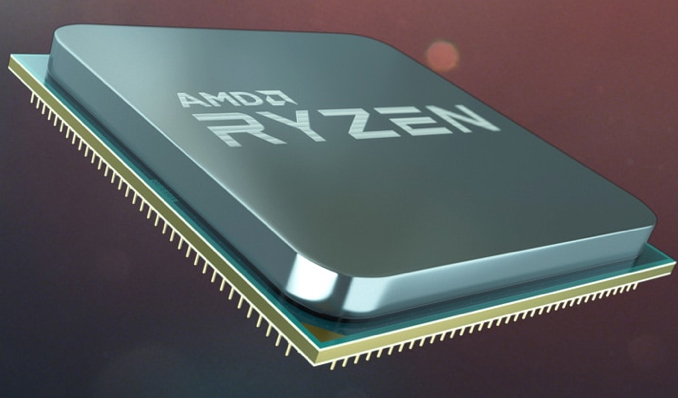
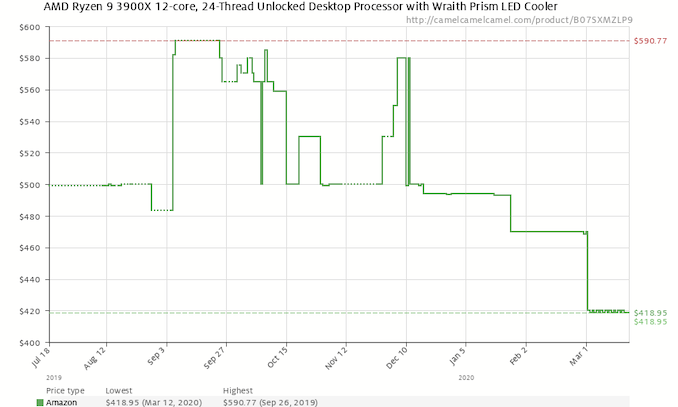

 Quote
Quote
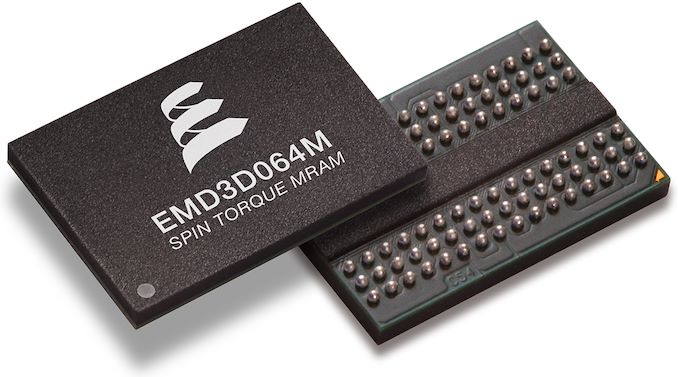
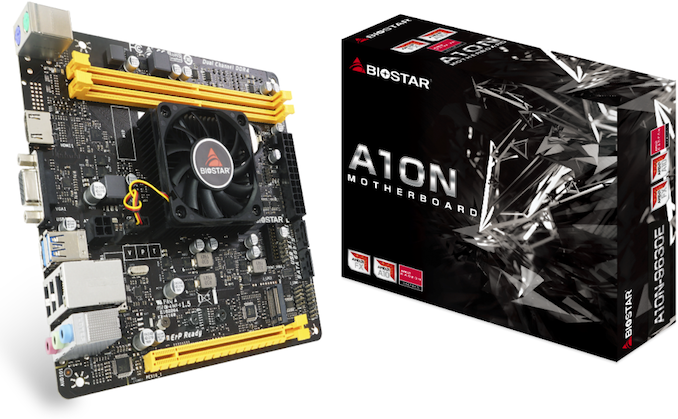
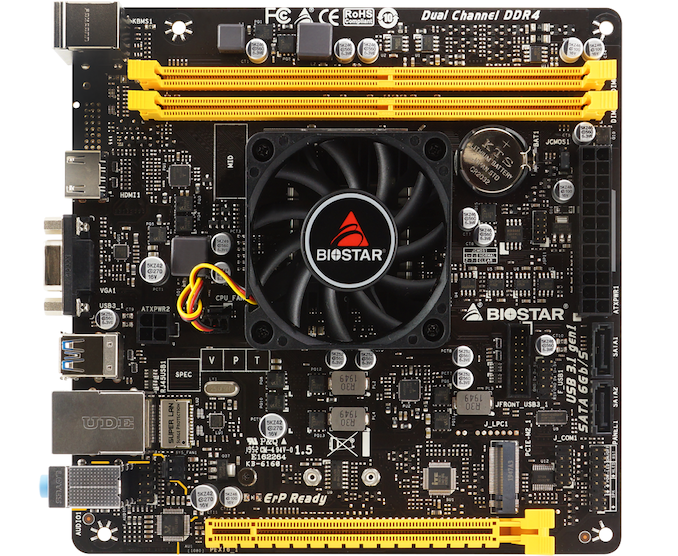
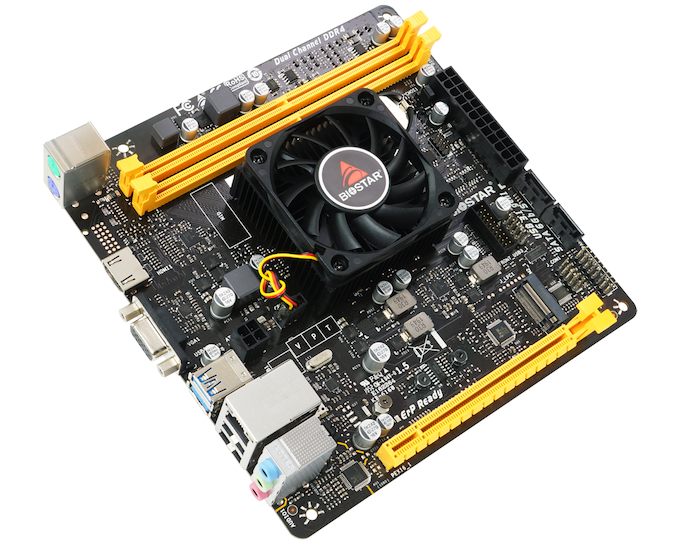

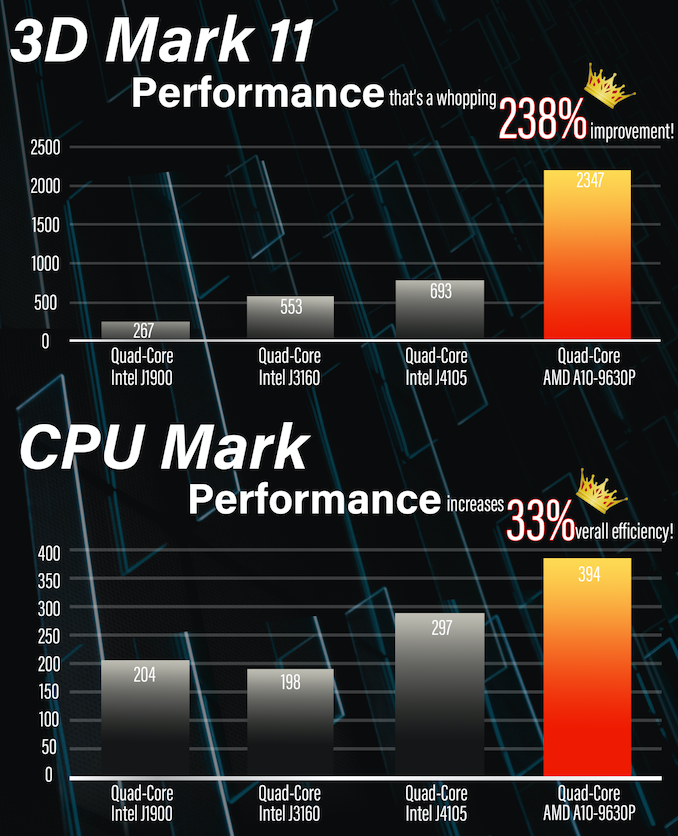
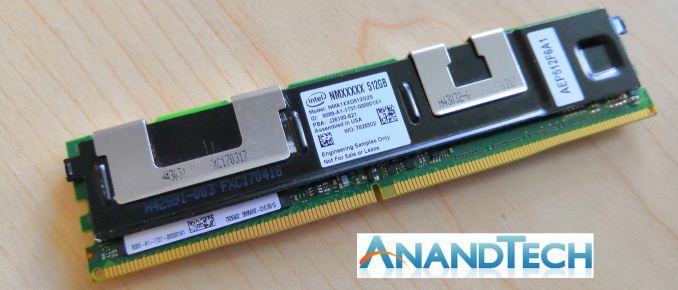
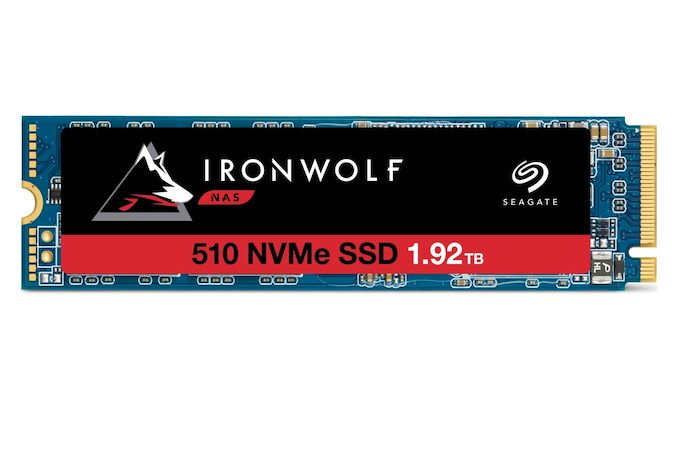
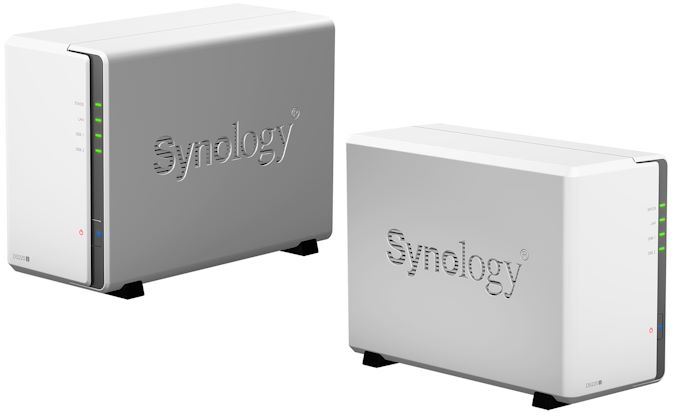
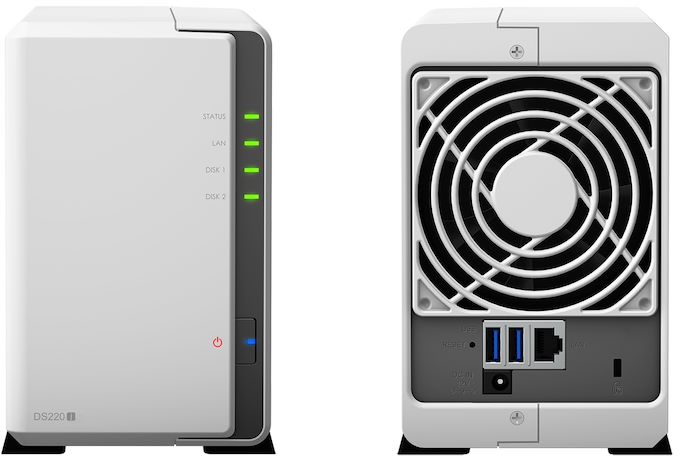
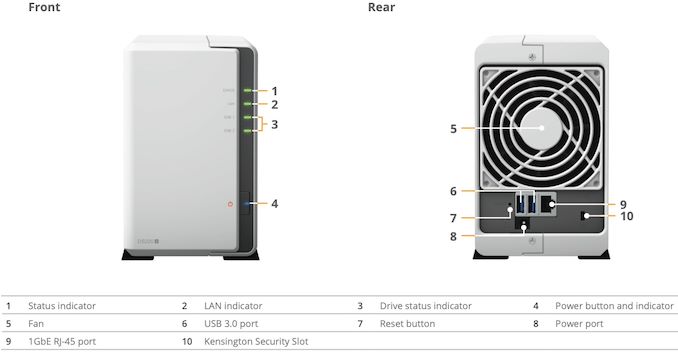
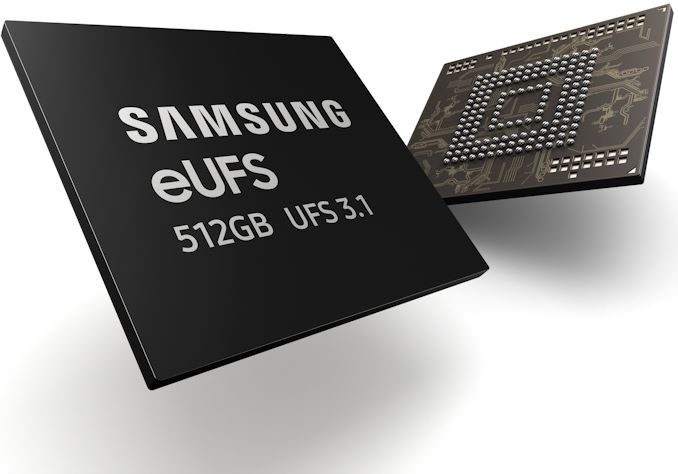


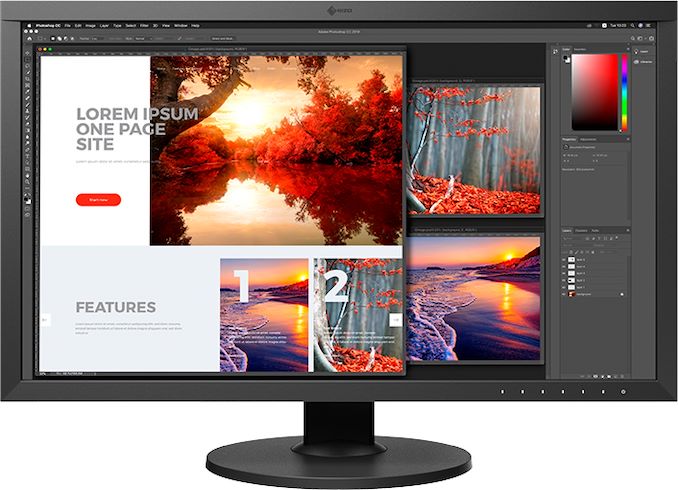
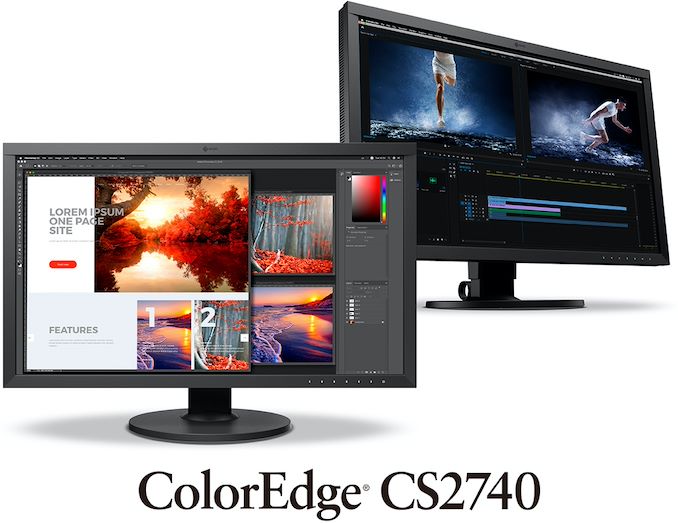
















Bookmarks